Digital Poster
AD: Pathology & Function
ISMRM & ISMRT Annual Meeting & Exhibition • 10-15 May 2025 • Honolulu, Hawai'i

 |
Computer Number: 97
4222. Deep
Learning-Based Prediction of PET Amyloid Status Using
Multi-Contrast MRI
D. Kim, J. A. Ottessen, A. Kumar, B. Ho, C. Young, E.
Mormino, G. Zaharchuk
Stanford University, Stanford, United States
Impact: Adding T2-FLAIR to T1w MRI in deep learning
models significantly improves amyloid PET positivity
prediction, aiding early Alzheimer's disease detection. This
approach enhances non-invasive opportunistic screening,
potentially streamlining patient selection for clinical
trials and targeted treatments.
|
|
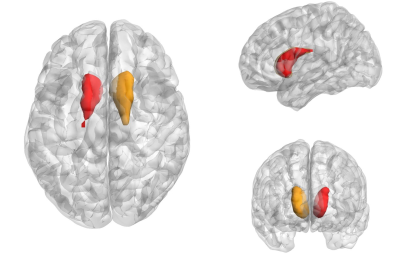 |
Computer Number: 98
4223. Role
of Caudate Nucleus Volume in Mild Cognitive Impairment Induced
by Occupational Aluminum Exposure
L. Yangyang, T. yan
First Hospital of Shanxi Medical University,, Taiyuan, China
Impact: Occupational Al exposure may contribute to
cognitive impairment, linked to bilateral CAU atrophy.
Declines in memory function may further reduce cognitive
ability by affecting CAU volume. Study offers insights into
neural mechanisms underlying cognitive impairment related to
occupational Al exposure.
|
|
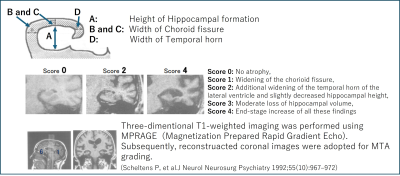 |
Computer Number: 99
4224. What
occurs in medial temporal lobe atrophy (MTA) in early dementia?
Pathological background and the utility of MTA grading
H. Takahashi, S. Takeda, Y. Takami, N. Hayakawa, C. Matsuo,
A. Arisawa, A. Miura, N. Tomiyama
Osaka University Graduate School of Medicine, Suita, Japan
Impact: MTA grading that reflects both neurodegeneration
and severity of tau pathology might be a practical method
for evaluating early-stage AD and it can be a predictor for
the effect of disease-modifying therapy by assessing the
severity of tau pathology.
|
|
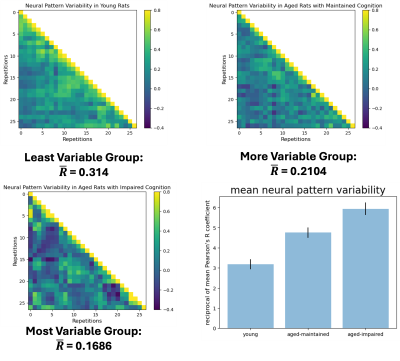 |
Computer Number: 100
4225. The
neurophysiological underpinnings of brain resilience: a BOLD
fMRI deep phenotyping study
E. Pineau, D. Almanza, M. Koletar, K. Chen, M. Goubran, J.
Sled, B. Stefanovic
University of Toronto, Toronto, Canada
Impact: The development of a non-invasive MRI assay to
assess brain resilience is an important step towards
bettering our understanding of why individuals are
differentially susceptible to cognitive decline due to
Alzheimer’s disease pathology.
|
|
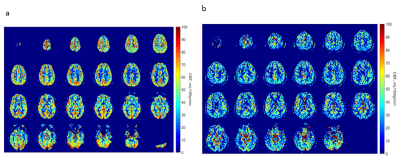 |
Computer Number: 101
4226. Alternations
in cerebral blood flow in individuals with mild cognitive
impairment measured by velocity selective arterial spin labeling
S. Wang, Z. Xu, C. Ferreira-Atuesta, D. Liu, Q. Qin, T.
Hedden, X. Xu
Biomedical Engineering and Imaging Institute, Icahn School of Medicine at Mount Sinai, New York, United States
Impact: The VSASL technique enables accurate measurement
of cerebral blood flow in elderly individuals. Assessing
changes in cerebral blood flow and its relationship with
amyloid deposition can enhance our understanding of
Alzheimer’s disease pathogenesis.
|
|
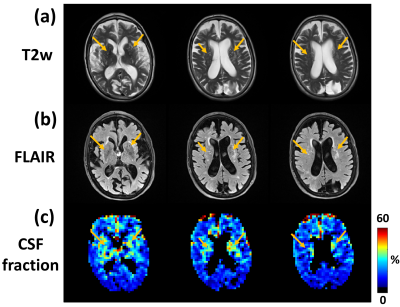 |
Computer Number: 102
4227. Detection
of amyloid-related imaging abnormality (ARIA) in Alzheimer’s
patients receiving anti-amyloid antibody therapy using long-TE
ASL MRI
Z. Hu, C. Li, Z. Wang, L. Jiang, T. Wisniewski, Y. Ge, H. Lu
Johns Hopkins University School of Medicine, Baltimore, United States
Impact: This
study demonstrated the first application of long-TE ASL in
AD patients receiving anti-amyloid antibody therapy. The
results support the hypothesis that arterial vessels are
leaky following anti-amyloid therapy, presumably due to
clearance of amyloid beta (Aβ) from vessel walls.
|
|
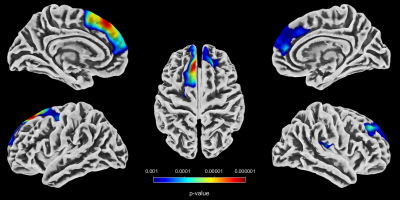 |
Computer Number: 103
4228. Surface-based
morphological analysis to explore the effects of type 2 diabetes
on brain structure in patients with Alzheimer's disease
Z. Qin, C. Yang
The First Affiliated Hospital of Dalian Medical University, Da Lian, China
Impact: AD combined with T2DM results in decreased
cortical thickness and increased sulcal depth in the
corresponding regions, which is valuable for further
understanding of T2DM-associated morphological changes in
brain structures in AD patients.
|
|
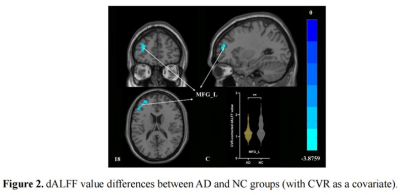 |
Computer Number: 104
4229. Cerebrovascular
Reactivity Modulates Spontaneous Brain Activity Abnormalities in
Alzheimer's disease: A Resting-State Functional MRI Study
X. Tang, L. Wang, Q. Feng, Q. Wen, H. Hu, Y. Zhu, Z. Liao,
Z. Ding, X. Xu
School of Medical Imaging, Hangzhou Medical College, Hangzhou, China
Impact: DALFF with CVR correction demonstrated enhanced
sensitivity in detecting abnormal brain activity in AD
patients and showed a significant correlation with cognition
function, providing a new perspective for understanding the
neurophysiological disruptions of AD.
|
|
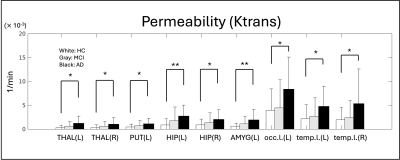 |
Computer Number: 105
4230. Brain
perfusion and permeability change in Alzheimer's Disease
patients.
W. Shin, J. Leverenz, J. Pillai, M. Lowe
Cleveland Clinic, Cleveland, United States
Impact: Cognitive impairment could be linked to
neurovascular BBB disruption and CBF reduction.BBB and CBF
changes can be distinctly captured by MRI methods in both
MCI and dementia stages of AD. The degree of these changes
relates to stage of AD.
|
|
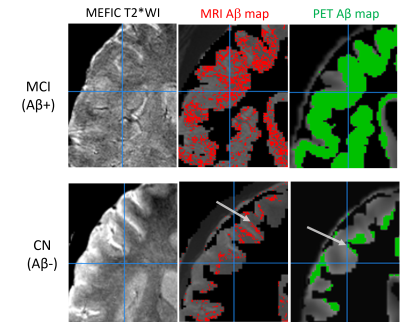 |
Computer Number: 106
4231. Can
MRI be used to image Aβ in the human brain at 3T?
Q. Yang, R. Elyan, R. Pang, S. Kanekar, W. Jens, D. Kalra,
P. Eslinger, P. Karunanayaka, K. Geesey, J. Wang
Pennsylvania State University College of Medicine , Hershey, United States
Impact: This research develops an MRI method to image
the Aβ load in the human brain in vivo, which allows us to
detect and quantify the pathological changes and associated
neurodegeneration and functional deficits with a single
image modality.
|
|
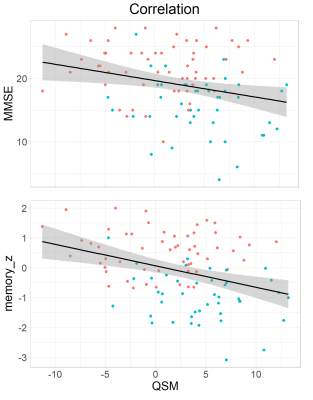 |
Computer Number: 107
4232. Increased
iron deposition in the PCC of older women with aMCI
T. Gong, C. Ye
Shandong Provincial Hospital Affiliated to Shandong First Medical University, Jinan, China
Impact: PCC iron deposition is a potential early
biomarker for cognitive decline in aMCI before volume
alterations, with sex-specific differences. This study
suggests that gender should be considered in
neurodegenerative research, paving the way for tailored
diagnostic and therapeutic strategies.
|
|
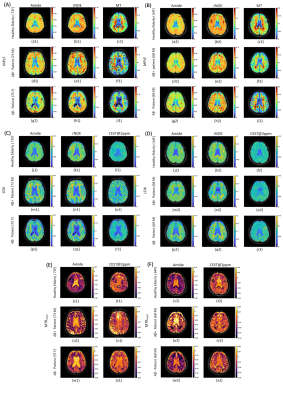 |
Computer Number: 108
4233. Exploring
the potential clinical application of CEST MRI in the diagnosis
of Alzheimer's disease
J. Wang, H. Zhang, Z. Wang, P. Cai, S. Zeng, H. Zhang, P.
Cao, K. W. CHAN, Y-F Shea, P-C Chiu, E. Y. Cheung, H-F Mak,
J. Huang
The University of Hong Kong, Hong Kong, China
Impact: CEST
revealed significant differences between HC and MCI/AD and
exhibited strong correlations with the HK-MoCA score. CEST
MRI has potential to detect molecular changes in brain,
providing additional information for AD diagnosis in
clinical MRI settings.
|
|
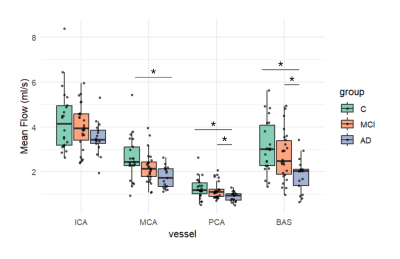 |
Computer Number: 109
4234. Macroscopic
blood flow is reduced in early Alzheimer's disease dementia,
independent of brain volume
C. Morgan, A. Elsayed, J. Fisher, L. Tippett, T. Melzer
University of Auckland, Auckland, New Zealand
Impact: Reductions in microscopic cerebral perfusion are
reasonably well documented in Alzheimer’s disease. However,
we find reductions in macroscopic blood flow (using 4D Flow)
in the larger feeding vessels of the brain, suggesting new
investigations of upstream flow alterations are warranted.
|
|
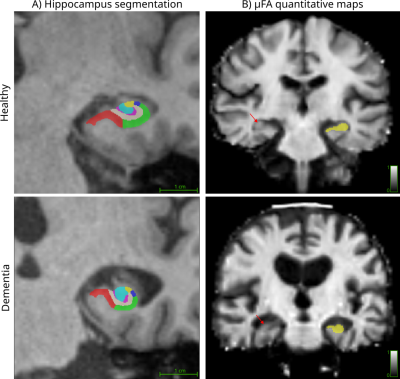 |
Computer Number: 110
4235. Microscopic
fractional anisotropy and magnetization transfer saturation of
the hippocampus in dementia

R. Rios-Carrillo, R. Malik, A. Khan, E. Finger, C. Baron
Western University, London, Canada
Impact: The use of μFA quantitative maps could be
beneficial for research and clinical application settings to
study and quantify microstructural hippocampal changes in
dementia.
|
|
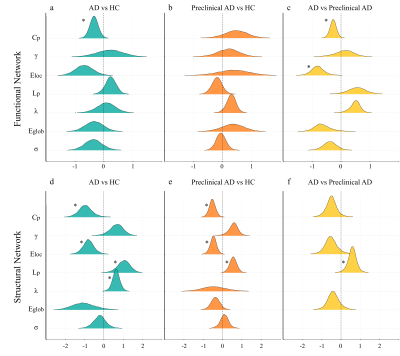 |
Computer Number: 111
4236. The
whole-brain connectome in Alzheimer's disease spectrum: A
Bayesian meta-analysis of graph theoretical characteristics
w. liu, c. zuo, L. Chen, H. Lan, X. Li, G. Kemp, S. Lui, X.
Suo, Q. Gong
West China Hospital, Chengdu, China
Impact: Structural and functional network topology
properties change in patients with AD, while in patients
with preclinical AD, structural network topology changes
occur with relatively preserved functional topology. This
supports the progressive disconnection hypothesis in AD
spectrum, and further suggests that alterations in
structural network topology may precede those in functional
network topology.
|
|
 |
Computer Number: 112
4237. Microstructural
changes in cerebral white matter in patients with Alzheimer's
disease combined with type 2 diabetes mellitus
Z. Qin, C. Yang
The First Affiliated Hospital of Dalian Medical University, Da Lian, China
Impact: Alzheimer's disease combined with type 2
diabetes mellitus patients present with altered cerebral
white matter microstructure, and TBSS-based DTI analysis can
objectively localise and quantitatively evaluate cerebral
white matter microstructural changes.
|
The International Society for Magnetic Resonance in Medicine is accredited by the Accreditation Council for Continuing Medical Education to provide continuing medical education for physicians.